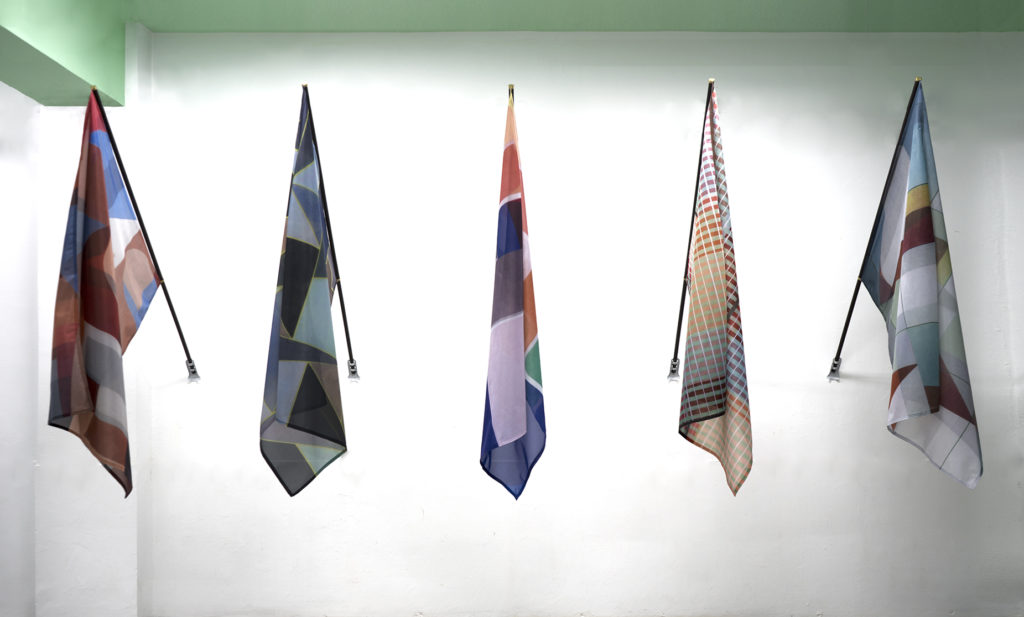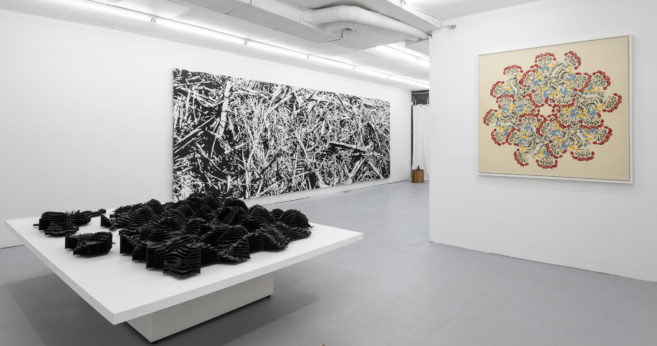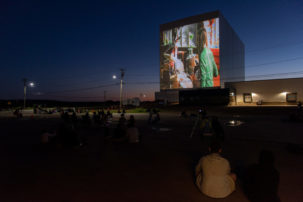Fifteen custom-designed flags hung on a row of metal staffs along three walls of a small gallery in John Monteith’s recent exhibition project “Kindred Spirits.” The flags were angled at a uniform tilt, as if pledging allegiance to a shared political ground in the centre of the room. Each flag demonstrates a range of compositional variations with a shared vocabulary of geometrical shapes, patterns and colours filtered with a grey undertone. The non-specific alliance they formed together celebrates interconnectedness rather than individual distinctiveness, the study of one flag often leading to similar traits in another and forming a visual trace of related resemblances.
This visual order is based on Monteith’s recent body of constructivist drawings titled Resonances, which references urban sites of social exchange, such as skyscrapers and skylines, paths, parks, highways and roadways. To create these drawings, the artist studied architectural images sourced online as well as photographs taken by himself of his surroundings to build a lexicon of varying patterns and shapes through meticulous methods of layering, abstraction and mark-making. The labour of his hands, so pronounced in these original drawings, is not as apparent in the flatly printed flags, and this loss seems to intentionally divert the viewer away from the core subjectivity of the artist’s studio-based, material process.
In fact, Monteith made consistent efforts to shift and extend the politics of his aesthetics in this exhibition. Working as both artist and curator, he declared the exhibition as an active, non-hegemonic, queer project space and invited a number of queer artists to showcase works with specifically gender-related themes such as self-representation, desire, intimacy and gender fluidity. These contributions, submitted by open call, were structured into a two-night performance program and video screening, which coincided with Pride Taipei and a proliferation of LGBTQ activities throughout the city. Given that context, Monteith’s show might have been easily misunderstood by some as another vehicle of visibility for queer culture, rather than what was ultimately a site with potential for broader and more open reflections of difference, diversity and queerness as promised by his confederation of flags.

John Monteith, Kindred Spirits (installation view), 2018. Dye sublimation prints on nylon, wood and brass, each flag 1.27 m x 93.9 cm x 1.52 m. Courtesy Division Gallery.







